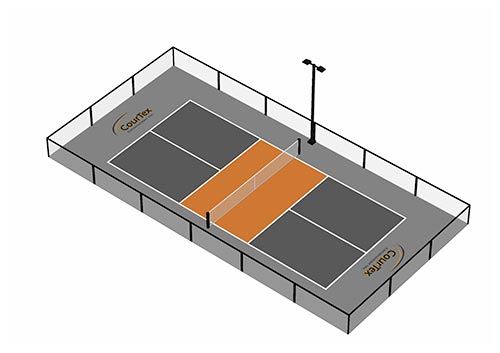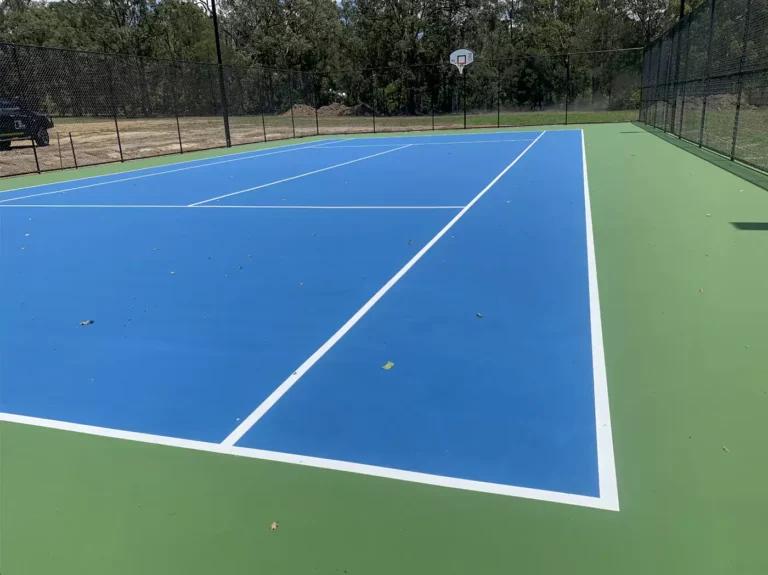Pickleball Court Construction-- Essential Tips for a Sturdy Court
Pickleball Court Construction-- Essential Tips for a Sturdy Court
Blog Article
Sustainable Practices in Pickleball Court Building You Must Know
As the popularity of pickleball proceeds to increase, so also does the requirement for sustainable techniques in court building and construction. The effect of these practices expands far past the court itself.
Picking Eco-Friendly Materials
Selecting eco-friendly products is an essential action in the building of sustainable pickleball courts. The choice of sustainable products not just decreases environmental effect however additionally boosts the durability and efficiency of the court. Secret materials include reused rubber for the surface area, which provides superb resilience and shock absorption while drawing away waste from land fills.
Furthermore, making use of locally sourced products minimizes transportation emissions and supports local economic climates. Pickleball court construction. Making use of native hardwoods for secure fencing and seating can give a lasting aesthetic while making sure resilience against the elements.
Incorporating permeable products for court foundations can additionally add to sustainability by permitting for natural water drain and minimizing drainage. These selections not only secure regional ecological communities however likewise promote much healthier play environments.
Efficient Water Drainage Solutions
While the option of environment-friendly products is essential, implementing effective water drainage remedies is just as crucial for maintaining lasting pickleball courts. Correct drainage not only protects the court surface area from water damages yet likewise lessens disintegration and runoff, promoting ecological honesty.
Reliable water drainage systems can include absorptive paving, which allows water to infiltrate the ground instead of pooling externally. This minimizes the possibility of standing water, which can cause mold and mildew and various other upkeep problems. Furthermore, incorporating strategically placed water drainage channels and swales can route excess water away from the court area, making certain a completely dry having fun surface area and protecting against soil erosion.
Utilizing native vegetation in the landscaping around the courts can additionally enhance drain by taking in excess water and reducing runoff. These plants require much less irrigation and promote biodiversity, straightening with lasting practices.
In addition, it is vital to consistently preserve the water drainage system to guarantee its lasting efficiency. This consists of clearing particles and surveillance for obstructions. By prioritizing efficient drainage solutions, pickleball court builders can dramatically add to the sustainability and durability of the facility, ultimately profiting both players and the environment.
Energy-Efficient Lights Options
As the need for pickleball proceeds to grow, integrating energy-efficient lights alternatives right into court style has actually come to be progressively crucial for sustainability. Typical lighting systems often take in extreme power, contributing to greater operational expenses and ecological influence. Embracing contemporary, energy-efficient innovations is essential for both brand-new constructions and renovations.
LED (Light Emitting Diode) illumination sticks out as a premier option as a result of its longevity and energy savings (Pickleball court construction). Compared to standard lighting, LEDs use roughly 75% much less energy and can last as much as 25 times longer, substantially lowering upkeep prices. The directional nature of LED lights lessens light air pollution, guaranteeing that illumination is focused on the court rather than surrounding areas.

Sustainable Surface Alternatives
Discovering sustainable surface area options for pickleball courts has actually acquired grip amongst building contractors and gamers alike. The focus on eco-friendly products not only aligns with the growing environmental understanding yet likewise boosts the efficiency and sturdiness of the courts.
One prominent alternative is the use of recycled rubber, which can be sourced from used tires. This product provides superb shock absorption, decreasing the threat of injuries for gamers while advertising sustainability. Additionally, modular you can try these out tiles made from recycled plastics use an additional practical option. These floor tiles are simple to mount and replace, and their adaptability enables for numerous court arrangements.
All-natural yard courts are additionally becoming a lasting option, advertising biodiversity and lowering the warmth island result. They require regular upkeep and water, which may not straighten with all sustainability objectives.

Water Preservation Strategies

Another reliable technique entails the installation of rainwater harvesting systems. These systems gather and keep rain for usage in keeping court surface areas and landscaping. This strategy not only conserves safe and clean water however also reduces dependence on community sources.
Furthermore, using drought-resistant landscape design around the courts is essential. Indigenous plants call for less water and are much better adapted to local climate problems, thus lowering general water consumption. Additionally, making use of efficient irrigation systems, such as drip watering, makes certain that water is provided straight to plant roots, minimizing evaporation and waste.
Conclusion
Including lasting techniques in pickleball court building my response and construction significantly adds to ecological conservation and source efficiency. Utilizing environment-friendly products, executing efficient drainage options, and taking on energy-efficient lighting alternatives can substantially reduce eco-friendly effect. Furthermore, discovering sustainable surface area options and using water conservation methods enhance the overall sustainability of these entertainment facilities - Pickleball court construction. By prioritizing these techniques, the building and construction of pickleball courts can align with wider environmental goals while advertising longevity and performance within neighborhoods.
As the popularity of pickleball continues to climb, so also does the demand for sustainable practices in court building and construction.Selecting green materials is a critical step in the construction of sustainable pickleball courts. By focusing on energy-efficient lighting choices, pickleball court producers can contribute to a more sustainable future while fulfilling the needs of players and stakeholders alike.Including lasting surface options not just improves the efficiency of pickleball courts but also paves the way for carrying out effective water conservation techniques.Including lasting methods in pickleball court construction dramatically contributes to environmental conservation and resource go to website effectiveness.
Report this page